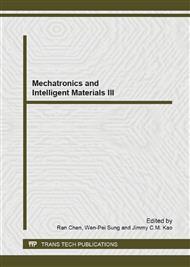p.968
p.972
p.976
p.981
p.985
p.990
p.995
p.1000
p.1008
Research Progress of Solar Auto-Tracking System – Solar Hybrid Tracking Mode
Abstract:
Making the best of solar energy is an important way for human beings to solve energy shortage. Although solar energy is the ideal alternative energy source, its disadvantages, such as low density, intermission and no change of space distribution, not only make it difficult to be collected and used, but also give a higher request to the tracking control system. In order to solve the problem of low utilization ratio of solar energy, it is significant to improve the precision and stability of the tracking system. This paper introduces the working principles and characteristics of the open loop, closed-loop and hybrid tracking mode firstly, the design of hybrid tracking control system is presented next. The solar hybrid tracking mode integrates the advantages of open loop and closed-loop tracking mode, and it can solve the problem of sensor tracking mode which cannot work in the cloudy day and the problem of program tracking mode which exists the accumulation error. As a result, it keeps higher precision and stability under all-weather conditions, and has a broad prospect.
Info:
Periodical:
Pages:
985-989
Citation:
Online since:
June 2013
Authors:
Price:
Сopyright:
© 2013 Trans Tech Publications Ltd. All Rights Reserved
Share:
Citation:



